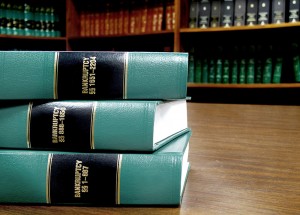- Home »
- Basics for Beginners »
- Dealing With Distress For Fun & Profit – Installment #12 – Stay Relief Strategy?
Dealing With Distress For Fun & Profit – Installment #12 – Stay Relief Strategy?
A written tour of business bankruptcy and its alternatives
Editors’ Note: If you are a regular reader of this column, you will know that this is the third installment in a row about the automatic stay (it is a big topic and we didn’t want to lay too much on you at once). If you’re growing bored of the topic, don’t despair, as our next installment will pan the camera back a bit and give you a flavor for how litigation in bankruptcy court works more generally. We’ll spend a few installments on that before we move onto other topics.
Early Motion or Not?
The first strategic decision many creditors face with respect to the automatic stay is how early to seek relief. On the one hand, creditors often want to obtain relief quickly since doing so may minimize the delay and inconvenience resulting from bankruptcy, and, they may want to seek relief early in the case before their collateral value begins to decline.
Also, even if the secured creditor believes that it may not obtain relief from the stay, the creditor may want to file in order to obtain adequate protection payments. Finally, even if the creditor expects that an early motion will be denied, it may set the stage for the debtor to make representations in its opposition such as targets for progress in the case that, when they are missed, will provide a stronger basis for the creditor’s second motion. In essence, then, the first motion can be used to set up the second one.
On the other hand, there may be a downside to moving too quickly. As a general matter, very early motions for relief from the automatic are more likely to fail than those filed later on in the case. Judges simply tend to be more concerned with the debtor’s rights early in a case and less sympathetic to a non-debtor’s desire to immediately extricate itself from the bankruptcy. In fact, filing an early motion too early may be seen by the court as an overly aggressive move by a secured creditor, making the creditor seem unreasonable and creating prejudice for future arguments.
Evidentiary Burdens
Bankruptcy Code §362(g) sets out the movant and non-movant’s respective burdens with respect to a motion for relief from stay as follows:
- The party requesting relief from the stay has the burden of proof on the issue of whether the debtor has equity in the property
- The party opposing relief from the stay has the burden of proof on all other issues
As a practical matter, however, both the movant and the responding party are well-advised to be prepared to present evidence on all of the relevant issues.
In order to streamline a hearing on a motion for relief from stay, parties may stipulate about facts about which there is no real dispute. For example, parties may avoid lengthy valuation evidence by stipulating as to the value of certain collateral. It makes sense to look for opportunities to reduce the matters being disputed, as long as such an agreement does not prejudice your case. At the least, the judge will appreciate it.
Sometimes a creditor or a debtor will use a motion for relief from the automatic stay to presage arguments that they may want to make later in the case, including at the plan confirmation stage:
- The debtor, for example, may use an early lift stay motion to outline its preliminary reorganization plans and efforts; or
- A secured creditor may want to claim that it is under-secured at an early lift stay hearing to show that its position is at risk
Avoiding Locking in a Position
Parties should carefully measure any arguments put forward at an early lift stay hearing against arguments that may become necessary later on in the case. For example, the same secured creditor, if it fails to obtain relief, may later want to take the position that it is over-secured in order to obtain post-petition interest under §506(b).
Finally, it is incumbent that non-debtor parties not violate the automatic stay. Although a creditor will ordinarily not be punished for inadvertent violations of the automatic stay, under §362(k), the bankruptcy court may extract damages, including attorney’s fees and even punitive damages from a party who willfully violates the automatic stay. There are few more effective ways to paint oneself as a “bad actor” in the eyes of the court than to willfully violate the automatic stay.
To read other installments in this series, click here.
For a great discussion on insolvency, we recommend this webinar and this webinar. You can also learn about federal equity receiverships here, and get advice on what to do when your business is struggling here.
About George Kuney
Prior to joining the faculty of the University of Tennessee College of Law, where he is now an emeritus professor, in 2000, Professor Kuney was a partner in the San Diego office of Allen Matkins Leck Gamble & Mallory LLP where he concentrated his practice on insolvency and reorganization matters nationwide. Before that he received…

About Jonathan Friedland
Jonathan Friedland is a principal at Much Shelist. He is ranked AV® Preeminent™ by Martindale.com, has been repeatedly recognized as a “SuperLawyer” by Leading Lawyers Magazine, is rated 10/10 by AVVO, and has received numerous other accolades. He has been profiled, interviewed, and/or quoted in publications such as Buyouts Magazine; Smart Business Magazine; The M&A…

Related Articles
Bankruptcy Considerations in a Collections Action
What Secured Lenders Should Know If Their Borrower Files for Bankruptcy
Selling Distressed Assets: The Assignment for the Benefit of Creditors Alternative
Chapter 11 Reporting Requirements: How Debtors Must Stay Transparent
Dealing with Corporate Distress 07: Chapter 11 is Not Always the Answer: Strategic Alternatives For and Against Distressed Businesses
3 Special Issues in Healthcare Restructurings

